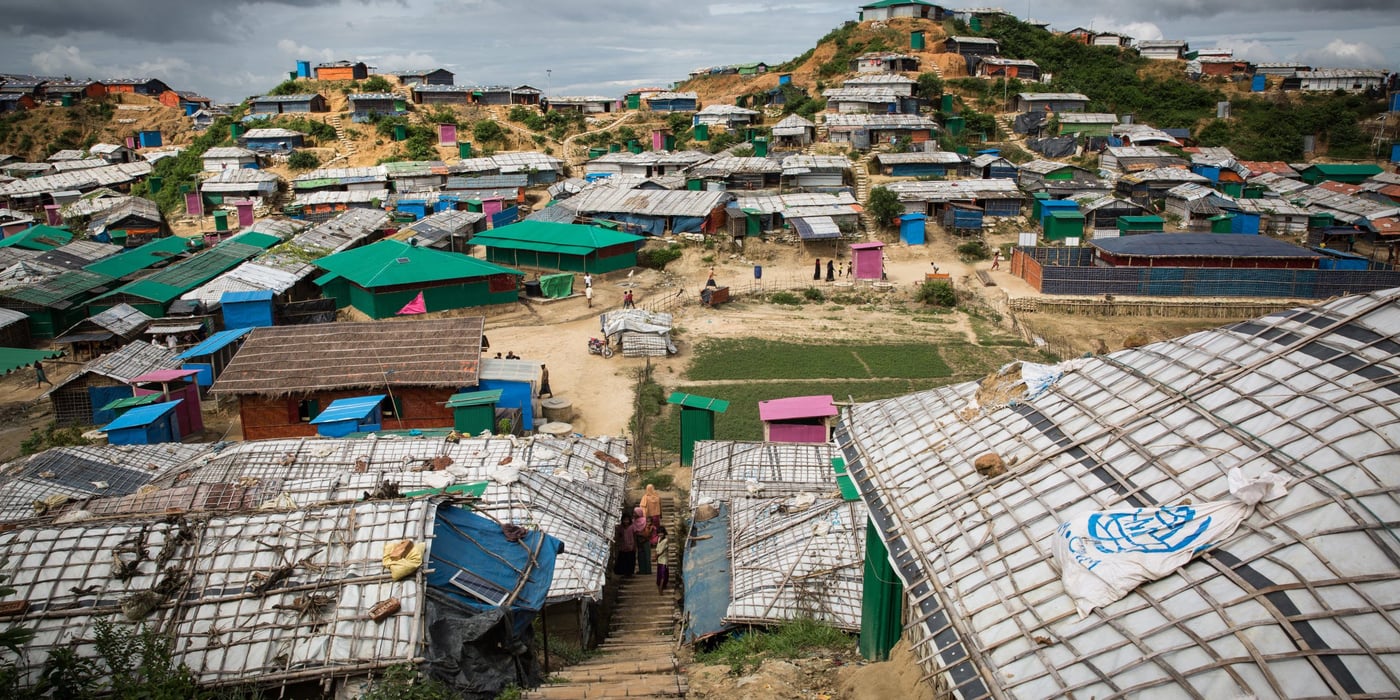
This opinion article was first published by the South China Morning Post on 25 November 2019.
Despite reports that a few Rohingya refugees have returned to Myanmar, the suggestion that more will follow stands in stark contrast to what I witnessed recently visiting the areas from where communities fled. International solidarity with these stateless people needs a fundamental rethink. If we succeed to only administer the crisis, we will fail to ever resolve it.
In 2012, the world watched as a wave of violence pushed at least 110,000 Rohingya people in Myanmar’s western Rakhine State from their land. Families wound up in overcrowded, flood-prone displacement camps, surrounded by armed guards, with neither the permission nor security to return home. The unmaking of their communities began. They were still waiting for security and permission to return when I met them in camps outside Sittwe town at the end of October.
Violent forced displacement exploded again in 2017 on an even larger scale. Armed men brutally attacked thousands of families in their homes. An unprecedented 740,000 people fled en masse across the border into Bangladesh, where they joined 200,000 who had earlier been displaced. Overnight, a small fishing port called Cox Bazaar became the world’s largest refugee camp. The UN High Commissioner for Human Rights labelled the attacks as ‘textbook ethnic cleaning’. The world gasped in horror.
A life in limbo
Two years later, families confined to camps in Bangladesh continue to lie in limbo. Despite a formal agreement signed between the two governments to repatriate the refugees, alarming developments on the ground have made this impossible. Continuing down this path will serve only to spawn another hopeless and unending refugee crisis.
Three developments must be reversed:
First, a massive land grab is underway in Myanmar’s poorest state. As the country opens for business internationally, foreign investors, construction companies, local and national authorities, and other Burmese communities have rushed in to occupy the land where torched villages once stood. Rohingya and other displaced communities are unaware that others are stealing their homes, their property and their ancestral land. One of the world’s greatest mass land grabs is happening on our watch.
Satellite images released by Amnesty International last year show whole villages and surrounding forests cleared to make room for new military bases. If these developments continue, there will be nothing left for the Rohingya to return to. I saw with my own eyes how construction companies laid claim on the land of others, sometimes next to the very camps of displaced families. This systematic takeover and exploitation of houses, land and property must stop. Myanmar’s authorities, and foreign investors from ASEAN nations and China are well-placed to end it.
Second, conflict is raging in northern Rakhine. Armed clashes between government forces and the local Arakan armed group have driven tens of thousands of people from their homes since January. Restricted access to communities living in these areas has prevented my organisation, the Norwegian Refugee Council, and other aid agencies from meeting humanitarian needs. The government’s shutdown of internet usage in many townships is preventing us from communicating with people caught up in the violence.
Third, the late Kofi Annan-led Rakhine Advisory Commission recommendations have been largely ignored since they were published in 2017. The report rightly determined that land, property and citizenship rights must be given to Rohingya communities. Ministers and army generals I spoke with in Myanmar’s capital Naypyidaw reconfirmed the government’s commitment to the report’s proposals. This rhetoric is welcome, but their words have yet to translate to real action on the ground to make areas safe for repatriation, return land and grant citizenship rights.
Cementing exile
Recent government plans to shut down displacement camps by converting them into so-called “villages” are deeply worrying. Building new homes in or next to closed camps instead of allowing people to return to the areas from which they fled, will only serve to cement marginalising exiled communities. Families should have freedom of movement and be helped to safely return to land they have lived on for generations.
The primary responsibility to protect the Rohingya people lies with the Government of Myanmar. But more effective international engagement is sorely needed to move this frozen process forward. Regional nations with influence and investments including China, Japan, India and Southeast Asian neighbours should make it their policy to guarantee security and citizenship for stateless communities, and end the shameless land grab.
Rohingya, Kaman and other vulnerable communities I met to do not believe they are safe from new attacks, abuse or discrimination if they return today. I stressed this to Min Aung Hlaing, the Commander-in-Chief of Myanmar’s army, when I met him. His armed forces must break with the past and enable peace with local armed groups to ensure the future safety of all communities in Myanmar.
Sadly, the Rohingya crisis the worst example of an issue affecting many groups across the country, crises that are completely neglected. In southeastern Myanmar, northern Shan and Kachin states have experienced similar barriers for return from conflict, and a lack of land and property rights.
For the Rohingya people we can take action today to improve their plight. We must more energetically hold regional powers and UN member states accountable for seeing that Kofi Annan’s proposals are matched with actions. They remain the best chance to end this crisis and must not be squandered.

